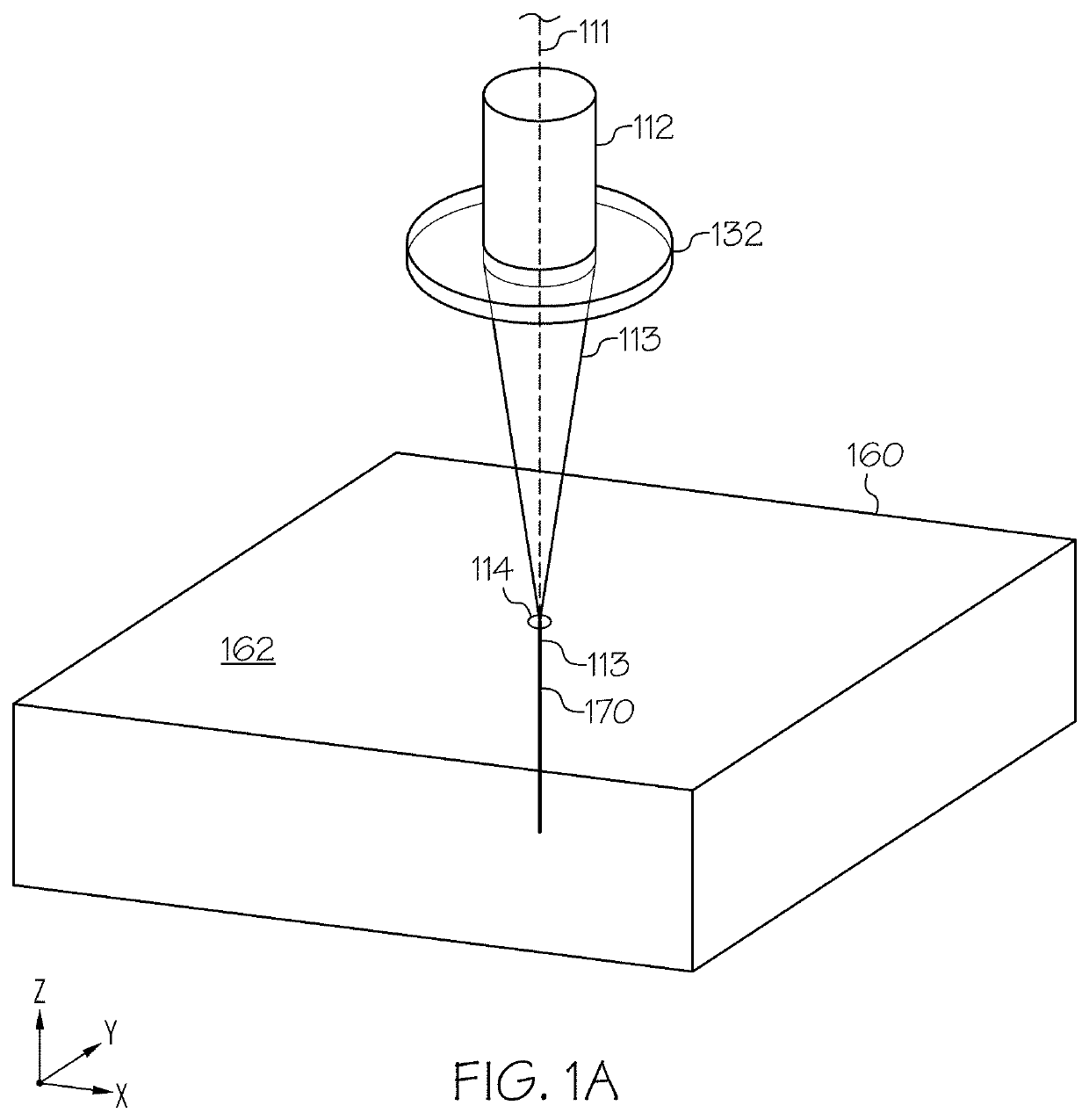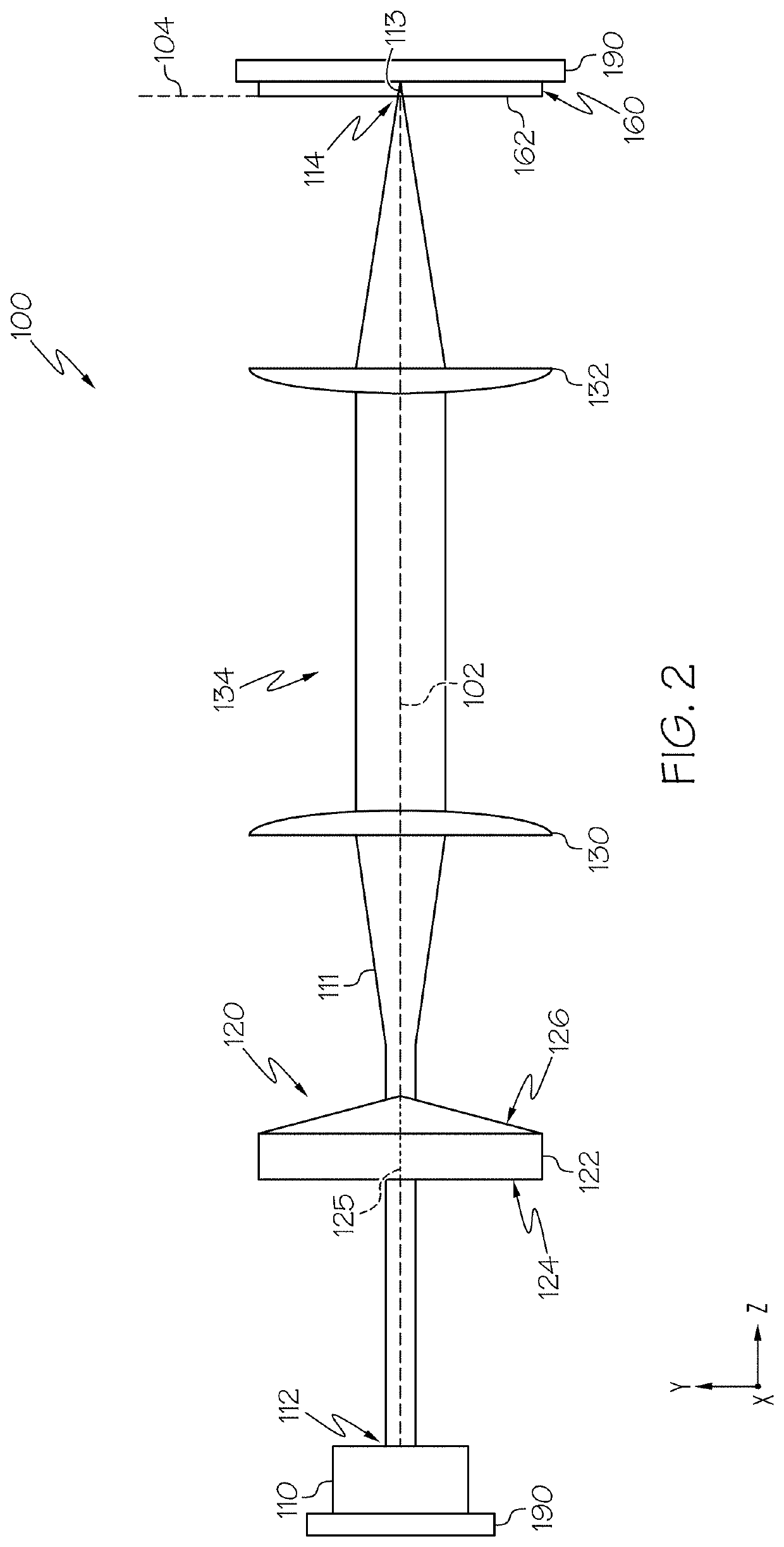Methods for laser processing transparent workpieces using pulsed laser beam focal lines and vapor etching
- Summary
- Abstract
- Description
- Claims
- Application Information
AI Technical Summary
Benefits of technology
Problems solved by technology
Method used
Image
Examples
examples
[0106]The following examples illustrate one or more features of the embodiments described herein.
[0107]High purity fused silica samples having a thickness of 350 μm were exposed to a QNDB laser and vapor etched to form vias through the thickness of the samples. FIGS. 7A-7F show the result of QNDB laser exposure and vapor etching. The laser exposure of each via site was performed using a Gauss-Bessel beam with a 532 nm wavelength, an ˜0.7 mm focal line length, a diameter of ˜1.2 microns, a burst energy of 80 μj / burst, and 15 pulses / burst. Following laser exposure, the parts were vapor etched using a combination of anhydrous HF and ethanol vapor at an etch rate of ˜0.23 μm / minute. The images show the post-etch entrance diameter of the vias (FIGS. 7A, 7C, and 7E), as well as cross-sectional profiles of the open via track (FIGS. 7B, 7D, and 7F). In these images, the dark areas indicate the openings in the glass where material has been removed. In particular, FIGS. 7A and 7B show vias of...
PUM
| Property | Measurement | Unit |
|---|---|---|
| Fraction | aaaaa | aaaaa |
| Thickness | aaaaa | aaaaa |
| Thickness | aaaaa | aaaaa |
Abstract
Description
Claims
Application Information
 Login to View More
Login to View More - R&D
- Intellectual Property
- Life Sciences
- Materials
- Tech Scout
- Unparalleled Data Quality
- Higher Quality Content
- 60% Fewer Hallucinations
Browse by: Latest US Patents, China's latest patents, Technical Efficacy Thesaurus, Application Domain, Technology Topic, Popular Technical Reports.
© 2025 PatSnap. All rights reserved.Legal|Privacy policy|Modern Slavery Act Transparency Statement|Sitemap|About US| Contact US: help@patsnap.com



